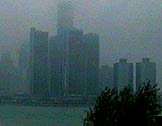
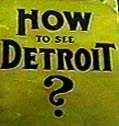
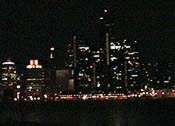
Of course, I was truly unprepared for the unspoiled grasslands, sunny vistas, and wide open feel of Detroit. Mainly I was surprised because all of these things were found in former neighborhoods rather than in parks. The level of decay here was at the same time more and less astounding than expected. What can you expect of a city which had two million residents 30 years ago and contains fewer than a million today?
I came to Detroit primed by Camilo Jose Veraga’s photo essays in “The New American Ghetto”. He was so bold as to assert that the near-abandoned downtown area, with its collection of empty skyscrapers from the 1920’s, be designated an national park with urban ruins and our disposable society as its theme. I don’t think I’d go quite so far.
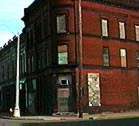
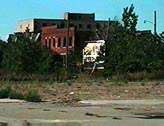
Actually, I found a shockingly beautiful city of early twentieth-century architecture, wide boulevards, and unusual neighborhoods. Driving here is a wonderful experience; it’s not just the lack of traffic, but the fact that Detroit was (understandably) designed for the automobile.
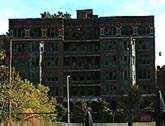
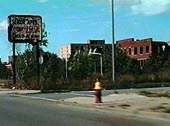
Granted, it was a bit depressing to see all the “holes” in the neighborhoods, the empty spaces where homes once stood, the boarded-up storefronts, the abandoned skyscrapers, etc. Literally, you drive through what used to be a dense neighborhood of rowhouses and large apartment buildings or even mansions and find two or three per block still standing, with the rest having reverted to grasslands. It’s quite disorienting.
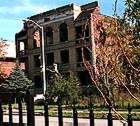
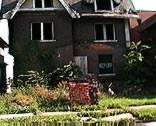
There were definitely patches where I felt uncomfortable. But, as in St. Louis, I was more afraid of what WASN’T visible than of anyone I saw on the streets. With a knowledgeable guide I would have felt secure doing more exploration. This will happen soon; I’m no less drawn to the place that I was before I arrived.
It’s sad to see that a city which was once so great is now in such condition. It’s also exciting to sense the potential. Detroit seems as if it’s sleeping, trapped in time and waiting to wake up and become a major city again (OK…I admit to paraphrasing Veraga here). Development has not removed the past here, although fires and abandonment have taken a huge toll.
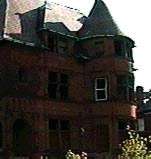
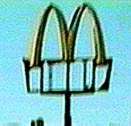
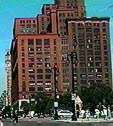
Lest this get depressing, all is not bleak in Detroit.
I will admit that I bedded down in the suburbs. I was indeed part of the problem rather than the solution. There is perhaps more of a disparity between the city and the suburbs here than in any other US city. The segregation rivals that of the south. I do not usually operate this way. I did so here for two reasons.
First, I simply didn’t know my way around and was worried about landing somewhere that my car, laden with essential trip stuff, might avoid a break-in. This is the same caution I exercise in SF all the time.
Second, in order to experience all that happens in Detroit, sad to say, it is absolutely NECESSARY to experience the suburbs, like’em or not. Much of the nightlife, shopping, and even the “trendy bohemian” scene has moved north of Eight Mile Road to places like Ferndale. Frankly, I never ran across a lot of motels in the city either.
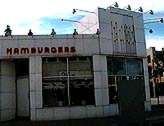
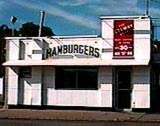
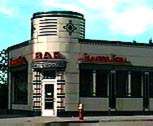
I ate at many White Castles. I photographed many former White Castles. I traveled Woodward Road, the depressed but definitely not boring main drag. I saw “the fist”, a large sculpture placed in the new alternative “white downtown” near Renaissance Center by Coleman Young. I rather like the symbolism. I saw the abandoned Hudson’s — once one of the largest department stores in the US — and the renovated Fox Theatre, and the former Book-Cadillac Hotel.
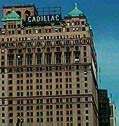
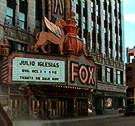
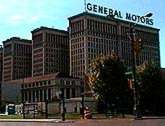
I hit a few bars, including the paranoia zone known as the Gold Coast, and a really cool spot in Ferndale called the Groove Room, which just happened to be queer-populated and hosted by a drag queen the night I was there. I got the feeling that there was an incredible scene but that I was having a hard time finding it.
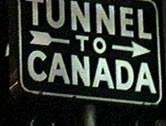
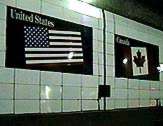
I also took the tour “overseas” to Windsor, Ontario, where I accidentally entered a (gasp) nude male strip club and another bar, bought chlorophyll chewing gum, and got inordinately excited that there were still Esso stations. I took advantage of the fact that combo meals were the same price at Burger King even though the Canadian dollar is worth only 72 cents US currency. However, I skipped the 61.9 cents per litre gasoline in favor of the much cheaper US variety.
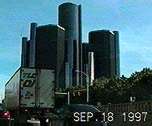
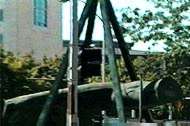
I did not, however, find my way to Lafayette’s Coney Island although it came highly recommended. And the Body Shop, a highly recommended bar, is no more. But boy do I have plans for my next trip when I can actually spend some time here.
LOVED Detroit.
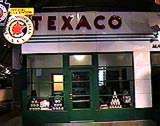

In Dearborn, I hit the Henry Ford Museum and marveled to the intact Holiday Inn guest room (circa 1968), the complete Texaco station (circa 1939) and the plethora of old cars, etc. This place is pretty amazing, and I found it worth the admission price. Think about it: a museum of car culture. What could be a more appropriate place for me to visit, especially while in Detroit on a trip where I was in search of roadside culture?
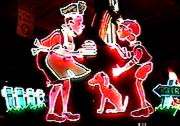
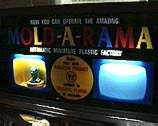
I smelled the nostalgic (from MY childhood at least) aroma of the Mold-a-Rama, which creates a plastic sculpture in a matter of minutes for the price of loose change. These machines were in every tourist trap in the world for a period in the early 70’s. I guess they were abandoned because too many people passed out from the fumes; now they’re a “period piece” in an exhibit on plastics. Does this mean my long-lost plastic dolphin from Marine World and my plastic Eiffel Tower from King’s Dominion (which are not for sale because I don’t know where they are, so please stop emailing me with purchase offers) are valuable now?
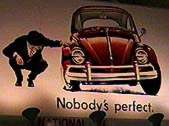
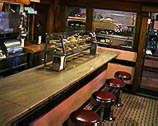
I hit the fully-restored diner. I saw the billboards and the neon signs and the streetcars. I fantasized (as I often do) about owning a Corvair. I even bought things. And then I left.
Like I said, I LOVED Detroit. And I HATED Ohio.
